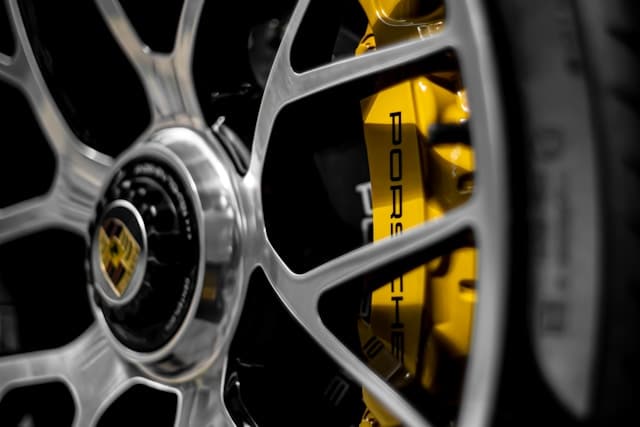Can You Retrofit a Carbon Ceramic Brake System on a Ford Fiesta ST for Improved Braking Performance?

In the world of performance cars, every aspect of the vehicle is considered for an upgrade, and the braking system is no exception. If you’re a car enthusiast, you may have heard about the superior qualities of carbon ceramic brake systems. Their superior stopping power, reduced brake fade, and longer lifespan make them a tantalizing option for performance upgrades. But can you retrofit such a system onto a vehicle that didn’t originally come with it? In this case, we will be exploring the possibility of fitting a carbon ceramic brake system onto a Ford Fiesta ST, a popular hot hatch.
Understanding Brakes and Where Carbon Ceramic Fits in
Brakes are one of the most vital components of any vehicle. They are responsible for slowing down your car and bringing it to a complete stop. The most common type of brake system found in cars is the disc brake, where a set of pads clamp onto a rotor to create friction, which slows the car down. The components that make up these systems, namely, the brake calipers, pads, and rotors, are made from a variety of materials, each with its advantages and drawbacks.
Dans le meme genre : What’s the Ideal Alignment Specs for a Ferrari 488 GTB on a Wet Track?
Carbon ceramic brakes are touted as the pinnacle of brake technology. They’re made from a composite of carbon fibers and ceramic, which gives them excellent heat resistance and longevity. They’re lightweight, which reduces the unsprung weight of the car, leading to better handling and performance.
The question remains, can you fit a carbon ceramic brake kit, typically found on high-performance supercars, onto a Ford Fiesta ST?
A découvrir également : What’s the Best Way to Install Advanced Telematics in a Commercial Vehicle Fleet for Better Management?
Retrofitting Brake Kits: Challenges and Considerations
Before you rush to purchase a set of carbon ceramic rotors and calipers, it’s important to understand the challenges that come with retrofitting brake kits. While it is technically possible to retrofit a carbon ceramic brake system onto a Ford Fiesta ST, it’s not as simple as swapping parts.
Firstly, carbon ceramic brakes are significantly larger than standard brakes. This means that they may not fit under the wheels of your Ford Fiesta ST. You may need to upgrade to larger wheels to accommodate bigger calipers and rotors, an added cost to consider.
Secondly, the braking balance of a car is carefully calibrated by the manufacturer. Fitting larger, more powerful brakes to the front wheels without a corresponding upgrade to the rear brakes can upset the car’s balance, leading to unpredictable and dangerous handling.
Lastly, carbon ceramic brake kits are expensive, often costing as much as a used car. For a Ford Fiesta ST, a car that’s known for its affordability and bang-for-the-buck performance, retrofitting such an expensive brake system may not make financial sense.
Performance and Practicality: Are Carbon Ceramic Brakes Worth it?
Having considered the challenges, the next question to answer is, are carbon ceramic brakes worth it? From a performance standpoint, they do have their advantages. Carbon ceramic brakes have a high resistance to brake fade, which is a reduction in stopping power that occurs when brakes are used heavily. They also last significantly longer than traditional brake pads and rotors.
However, these advantages may not be fully appreciated on a Ford Fiesta ST, which is a light car with a relatively powerful braking system. Unless you’re regularly tracking your Ford Fiesta ST and pushing its performance to the limit, you may not see a significant improvement in braking performance after retrofitting a carbon ceramic brake kit.
Installing Carbon Ceramic Brakes: The Process and Equipment
Let’s assume you’ve decided to go ahead with the retrofit. The first step is to find a carbon ceramic brake kit that fits your Ford Fiesta ST. As mentioned earlier, carbon ceramic brake kits typically include larger calipers and rotors, so you’ll likely need to upgrade to bigger wheels.
The brake kit will include the front and rear brake calipers, rotors, and pads. The calipers are usually forged and come with high-performance brake pads. The rotors are either slotted or cross-drilled for better heat dissipation.
Installation should be done by a professional to ensure safety and the correct setup. The process involves removing the old brake system, fitting the new carbon ceramic brake system, and then bleeding the brakes to remove any air in the brake lines. After installation, the car should be tested in a controlled environment to ensure the brakes are functioning correctly.
In conclusion, retrofitting a carbon ceramic brake system onto a Ford Fiesta ST is possible, but it comes with challenges and considerations. It’s an investment that should be carefully considered, weighing the benefits against the costs and potential drawbacks.
The Nitty-Gritty of Brake Upgrade: Cost and Other Factors
An upgrade to a carbon ceramic brake system is not only about the brake fitment and installation process but also about evaluating the cost and other ancillary factors. The brake kits are often a splendid blend of performance and visual enhancement, with black red or billet aluminum calipers and drilled slotted rotors adding to the aesthetic appeal of your Ford Fiesta ST.
However, the high cost of these brake kits constitutes a substantial factor to consider. A big brake kit costs thousands of dollars, often as much as a used car itself. This cost escalates when you consider the need for larger wheels to accommodate the new brake system. Consequently, the return on investment greatly depends on how often you intend to push your car to its performance limits.
Keep in mind, the initial purchase cost is not the end of the financial commitment. The brake pads in carbon ceramic systems, while lasting longer than standard brake pads, are more expensive to replace. High performance does come with high maintenance costs.
Another integral aspect of a brake upgrade is the change in the car’s dynamics. The Ford Fiesta ST, known for its impressive balance and handling, could have its dynamics altered by a larger, more powerful front brake without a corresponding upgrade to the rear brake. This could lead to less predictable handling and potentially compromise safety.
Finally, a brake upgrade might not be a DIY project for everyone. For safety and proper functioning, it’s recommended that a professional install the brake system. This adds to the overall cost and should be factored into your decision.
Conclusion: The Last Stop
In conclusion, retrofitting a carbon ceramic brake system in a Ford Fiesta ST, while technically possible, involves significant considerations. The process involves not just upgrading the brake system, but also possibly upgrading the wheels and even altering the car’s handling dynamics.
While the carbon ceramic brake system offers superior stopping power and longer lifespan, its benefits may not be fully appreciated unless you are regularly pushing your Ford Fiesta ST to its performance limits on the track. The high initial cost, coupled with ongoing maintenance costs, necessitates careful consideration of the cost-to-benefit ratio.
It’s clear that a carbon ceramic brake upgrade is a serious commitment that goes beyond the love for high performance and aesthetics. It’s an investment that needs to be thoroughly evaluated and carefully thought out.
In the world of car modification, there’s no one-size-fits-all solution. A carbon ceramic brake system may be the perfect fit for some, but it may be an unnecessary extravagance for others. As a car enthusiast, the key is to understand your vehicle, know your driving habits, and make an informed decision that enhances your driving experience and safety.
